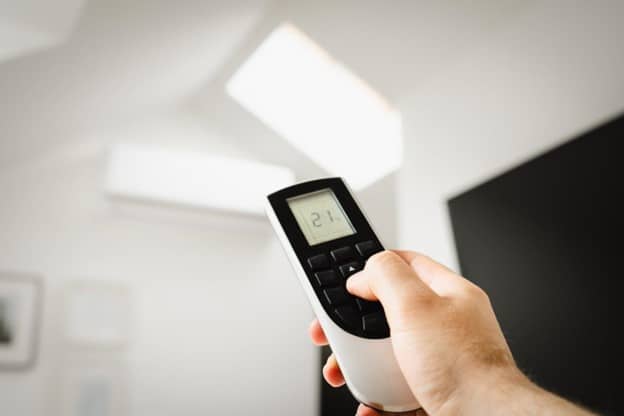Source: Pexels
It’s no secret that heating, ventilation, and air conditioning (HVAC) systems are essential for maintaining comfortable and healthy indoor environments in both residential and commercial buildings. Whether you’re keeping a building comfortable or maintaining the right temperature for delicate equipment, HVAC technology plays a crucial role.
But over the last decade or so, the conversation around HVAC systems has shifted: things are no longer about comfort only but also about environmental safety, energy efficiency, and reducing the carbon footprint.
And in recent years, the industry has evolved to meet these changing demands, with new technologies leading the way in making HVAC systems more eco-friendly and safer for the planet.
Smart Thermostats
Smart thermostats are practically a must-have for anyone serious about efficiency. Traditional thermostats leave too much room for human error – forgetting to adjust the temperature when you leave the house or setting it higher than needed.
Smart thermostats, on the other hand, allow you to monitor and control your HVAC system remotely, even learning your habits and adjusting temperatures automatically. Not only do you end up saving energy, but you also reduce the overall strain on your HVAC system, increasing its lifespan.
In terms of environmental impact, less energy use means fewer greenhouse gasses, especially when paired with renewable energy sources.
Energy Analytics and Management
In an era where everything thrives on data, it makes sense that HVAC systems are leveraging analytics to improve efficiency. Energy management systems (EMS) monitor your HVAC usage and help identify areas where improvements can be made, providing insights on when energy spikes happen, how often your HVAC system is running unnecessarily, and even predict when maintenance will be needed.
For businesses, energy analytics is especially important as it can help cut down costs significantly. And from an environmental perspective, the less energy you waste, the better it is for the planet. These systems promote sustainability while reducing operational risks – everything you want in a modern building.
Green Refrigerants
The refrigerants used in HVAC systems have a major environmental impact. While older systems use hydrofluorocarbons (HFCs), which are notorious for their contribution to global warming, green refrigeration technology is much less harmful to the environment.
The new refrigerants have a lower Global Warming Potential (GWP), meaning they don’t trap as much heat in the atmosphere when released. Switching to systems that use them is one of the most straightforward ways to reduce your HVAC system’s environmental footprint.
Not only will this keep you compliant with increasingly stringent environmental regulations, but it will also ensure your business is contributing to a healthier planet.
Geothermal Heat Pumps
Geothermal heat pumps are another technology gaining traction for their eco-friendliness. These tap into the natural heat stored underground to provide heating and cooling for buildings, so they’re much more efficient than traditional HVAC setups. With geothermal energy, you’re essentially using the Earth as a giant battery for your heating and cooling needs.
For homes and businesses looking to make a long-term investment in energy efficiency, geothermal systems offer both cost savings and reduced environmental impact. They’re quiet, require less maintenance, and last longer than most other systems. Plus, they drastically cut down on the reliance on fossil fuels for heating and cooling.
HVAC Systems and Termite Management
HVAC systems, especially older ones, can create moisture conditions that attract termites. Damp wood is a termite’s best friend, and once they’re in, the structural integrity of any building could be at risk.
While this may seem unrelated to environmental safety at first glance, a termite infestation can lead to significant wood damage, requiring extensive repairs and material replacements, which come with their own environmental costs.
Needless to say, termite control is essential for protecting both residential and commercial buildings. This is why some of the latest HVAC systems incorporate moisture management technology, ensuring the balance of humidity in a building is optimized.
Not only does this keep the air comfortable, but it also keeps termites from finding a suitable environment to thrive in.
Solar-Powered HVAC Systems
Solar energy is an ultra-fast-growing technology, and many modern HVAC systems are now designed to be powered, at least partially, by solar panels. This reduces reliance on electricity from the grid and takes advantage of a clean, renewable resource.
Solar-powered HVAC systems often pair well with battery storage solutions, allowing you to keep your system running even when the sun isn’t shining.
For businesses and homeowners, the appeal of solar-powered HVAC is twofold: long-term energy cost savings and the environmental benefits of reducing carbon emissions.
Energy Recovery Ventilation (ERV)
Energy recovery ventilation (ERV) systems take HVAC efficiency to the next level. Instead of letting the air that’s been heated or cooled escape the building, ERV systems capture that energy and reuse it. Essentially, they recycle the heat or cooling energy from a building’s exhaust air and use it to condition incoming fresh air.
As you can probably tell, this greatly reduces the workload on the HVAC system while keeping the indoor air quality high – important for both environmental safety and health.
You get the benefits of fresh air without the energy waste, making it a great option for eco-conscious homeowners and businesses.



